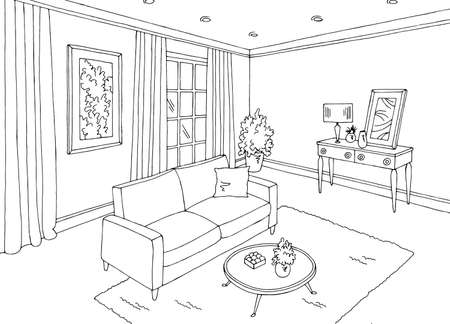Introduction to Farrow & Ball
When it comes to creating a truly British interior, few names carry as much weight as Farrow & Ball. With a legacy that stretches back to 1946, this Dorset-based paint manufacturer has become synonymous with quality, craftsmanship, and timeless style. Revered not only across the UK but also internationally, Farrow & Ball is celebrated for its meticulously curated palette and commitment to traditional methods. Their paints are renowned for their depth of colour and unique finish, making them a preferred choice for feature walls that demand attention yet exude understated elegance. At its core, Farrow & Ball represents more than just paint – it embodies a rich heritage steeped in British tradition, blending modern innovation with classic sensibilities. Whether you are renovating a period property or adding character to a contemporary home, exploring the world of Farrow & Ball is an invitation to embrace enduring British design at its finest.
2. What Makes Farrow & Ball Paints Unique
When considering paints for feature walls in the UK, Farrow & Ball stands out for several reasons that resonate with both design professionals and homeowners alike. Their approach blends heritage, sustainability, and artistry, making each tin of paint more than just a colour—it’s an experience.
The Distinctive Colour Palette
Farrow & Ball is renowned for its carefully curated colour palette. Unlike mass-market brands, their selection is intentionally limited but deeply nuanced. Each shade carries a story, often inspired by British landscapes, historic properties, or classic interiors. This means you’re unlikely to find garish or overly bright hues; instead, the palette is rich in depth and subtlety, perfect for creating atmospheric feature walls.
Signature Colours Table
| Colour Name | Description | Inspiration |
|---|---|---|
| Hague Blue | Deep blue with green undertones | Traditional British woodwork |
| Elephant’s Breath | Warm mid-grey | Countryside barns |
| Cornforth White | Subtle grey-based white | Historic stone cottages |
Eco-Friendly Formulations
Sustainability is at the core of Farrow & Ball’s ethos. Their water-based paints are low in VOCs (volatile organic compounds), making them safer for homes and kinder to the environment. They also ensure their production processes minimise waste and pollution—qualities increasingly sought after by UK consumers who value eco-conscious home improvement.
Eco Credentials Comparison
| Feature | Farrow & Ball | Conventional Paints |
|---|---|---|
| Low VOC Content | Yes (meets UK/EU standards) | No (varies by brand) |
| Water-Based Formulas | Majority of range | Mainly solvent-based options available |
Artisan Craftsmanship and Heritage Production
The company’s commitment to artisan craftsmanship means each batch of paint is meticulously blended and tested in Dorset, England. Their traditional methods ensure exceptional coverage and finish quality—an essential aspect for those seeking a flawless feature wall. This attention to detail extends to their wallpaper range, which is printed using real paint rather than ink, ensuring perfect harmony between wall colours and patterns.
The British Standard for Excellence
This unique combination of curated colour choices, sustainable practices, and hand-crafted quality sets Farrow & Ball apart as a truly iconic British brand—making it a top choice for anyone looking to create standout feature walls that reflect both style and substance within the UK context.

3. Choosing the Perfect Farrow & Ball Shade for Feature Walls
When it comes to crafting a standout feature wall with Farrow & Ball paints, selecting the right shade and finish is essential to capturing the essence of modern British interiors. Start by considering the room’s natural light; northern-facing spaces often benefit from warmer undertones, such as Setting Plaster or Jitney, which bring a welcoming glow. For sun-drenched rooms, cooler tones like Hague Blue or Down Pipe can add depth without overwhelming. If you’re aiming to make a bold statement, opt for deep, dramatic hues such as Railings or Stiffkey Blue, paired with a Modern Emulsion finish for a durable, washable surface perfect for high-traffic areas.
For subtler focal points, muted shades like Ammonite or Elephant’s Breath work beautifully, especially in spaces designed for relaxation. Pairing these with Estate Emulsion provides a soft, chalky texture that feels quintessentially British and refined. To further enhance your feature wall, consider using eggshell finishes on woodwork or architectural details—this not only adds visual interest but also showcases Farrow & Ball’s unique ability to create harmonious schemes across materials.
Don’t shy away from layering colour; use testers to paint generous swatches and observe how each shade interacts with the existing décor throughout the day. For a truly bespoke touch, take inspiration from classic British design elements—like period panelling or ornate cornices—and select colours that either complement or boldly contrast these features. Remember, whether you’re creating an impactful centrepiece in a Georgian terrace or injecting personality into a modern flat, Farrow & Ball offers timeless options that help define the character of any British home.
4. Applying Farrow & Ball Paints: Best Practices
When it comes to achieving a professional-looking feature wall with Farrow & Ball paints, preparation and technique are key—especially considering the unique characteristics of British homes and the UK’s often unpredictable climate. Below, we share practical advice tailored for local conditions, ensuring your chosen colour looks stunning and stands the test of time.
Preparation: The Foundation of a Flawless Finish
Proper prep work is essential for any decorating project, but it’s particularly important when using high-quality paints like Farrow & Ball. British homes, especially period properties, often have older plaster or textured walls which require extra care.
| Step | Details |
|---|---|
| Cleaning | Remove dust, cobwebs, and any grease spots with a damp cloth and mild detergent. |
| Repairs | Fill in cracks or holes with filler suitable for your wall type (e.g., gypsum-based for plaster). Sand smooth once dry. |
| Priming | Use Farrow & Ball’s recommended primer/sealer for the best adhesion, especially on fresh plaster or previously unpainted surfaces. |
Techniques for Feature Walls in UK Homes
Choosing Tools
Select high-quality brushes and rollers designed for water-based paints. For period properties with intricate mouldings, opt for smaller sash brushes for precision work.
Application Tips
- Cutting In: Start by ‘cutting in’ around edges and corners with a brush before using a roller on larger areas. This prevents uneven lines and ensures sharp edges.
- Rolling: Use an even pressure and avoid overloading the roller. Apply paint in a ‘W’ pattern to distribute colour uniformly.
- Multiple Coats: British weather can affect drying times. Allow sufficient ventilation but avoid painting during very humid or cold spells. Two coats are usually recommended for depth of colour and durability.
Caring for Your Feature Wall
Once dry, avoid heavy cleaning or touching up for at least two weeks to allow the paint to fully cure. For ongoing maintenance, use a soft cloth to gently remove marks—Farrow & Ball’s modern emulsion is wipeable and tough enough for everyday life in busy UK homes.
Summary Table: Key Steps for Success
| Task | UK-Specific Advice |
|---|---|
| Damp Checks | If your home is prone to condensation, consider using moisture-resistant undercoats to prevent peeling. |
| Masonry Walls | Masonry needs special primers; check if your feature wall is external or faces an unheated space. |
The right preparation and application methods will ensure your Farrow & Ball feature wall not only looks spectacular but also withstands the demands of British homes and weather conditions.
5. Maintaining and Refreshing Feature Walls
Feature walls painted with Farrow & Ball’s distinctive hues are a true statement in any British home, but to keep them looking their best, a thoughtful maintenance routine is essential. Here’s how to ensure your feature wall remains as striking as the day it was painted.
Ongoing Care: Daily and Weekly Tips
To protect the character and vibrancy of your feature wall, start with gentle dusting using a soft, dry cloth or feather duster. Avoid harsh scrubbing which may dull the unique finish of Farrow & Ball paints, especially those with a matte or eggshell sheen. In high-traffic areas or family homes, consider using a slightly damp microfibre cloth for stubborn marks—always test in an inconspicuous spot first.
Addressing Touch-Ups
Even with careful use, scuffs and chips can occur over time. Keep a small pot of your original paint on hand for quick touch-ups. Before applying, gently clean the area and lightly sand if necessary. Use a fine artist’s brush for precision, blending the new paint seamlessly into the old. For best results, touch up during similar weather conditions to when the wall was originally painted; this helps match the finish more closely.
Renovation and Refreshment Strategies
If your feature wall begins to show signs of ageing or you fancy a change, Farrow & Ball’s palette makes refreshing easy. Lightly sand the surface to remove imperfections and apply a fresh coat in either the same signature colour or something new from their range. Don’t forget to use their recommended primers for the most authentic and durable result. For listed buildings or period properties, consult local guidelines to ensure your renovations respect heritage standards while still embracing contemporary flair.
Preserving Character Over Time
The secret to long-lasting beauty lies in regular inspection—look out for moisture issues or fading due to direct sunlight, which is particularly relevant in south-facing British rooms. Consider UV-protective window treatments if sun exposure is significant. With these ongoing care tips and timely refreshes, your Farrow & Ball feature wall will continue to be a vibrant focal point that embodies timeless British style for years to come.
6. Real-Life Inspirations: British Homes Featuring Farrow & Ball
Standout Transformations Across the UK
Farrow & Ball’s rich palette has become a staple for those seeking to create captivating feature walls, and British homes provide some of the most striking examples. From Victorian terraces in London to countryside cottages in the Cotswolds, homeowners are using these paints to highlight architectural features, create mood, and bring character into their spaces. In one North London semi, “Hague Blue” was used on a living room chimney breast, creating a sophisticated focal point that draws the eye and makes period cornicing pop. Meanwhile, a converted barn in Yorkshire saw “Pigeon” on its kitchen feature wall, blending seamlessly with exposed beams and rustic textures.
Spotlighting Current Trends
A notable trend among British homeowners is the embrace of deep, saturated hues like “Railings” or “Inchyra Blue” in smaller rooms—powder rooms and hallways—proving that bold colour can enhance even the most compact of spaces without overwhelming them. Another trend is pairing strong feature colours with crisp white trims (“All White” or “Wevet”) for sharp contrast and a clean finish. Open-plan living areas often showcase different Farrow & Ball shades on adjoining feature walls to help define zones while maintaining visual harmony.
Homeowner Experiences and Insights
Many who have chosen Farrow & Ball for their feature walls speak highly of the paint’s transformative effect—not just visually but emotionally. One Brighton homeowner described how “Sulking Room Pink” brought warmth and calm to a previously drab bedroom, while another in Manchester praised the tactile finish of “Down Pipe” in their lounge, noting its ability to subtly change under different lighting throughout the day. Across Britain, there’s consensus: Farrow & Ball colours offer more than paint—they provide personality, depth, and a uniquely British sense of style that’s both contemporary and timeless.


